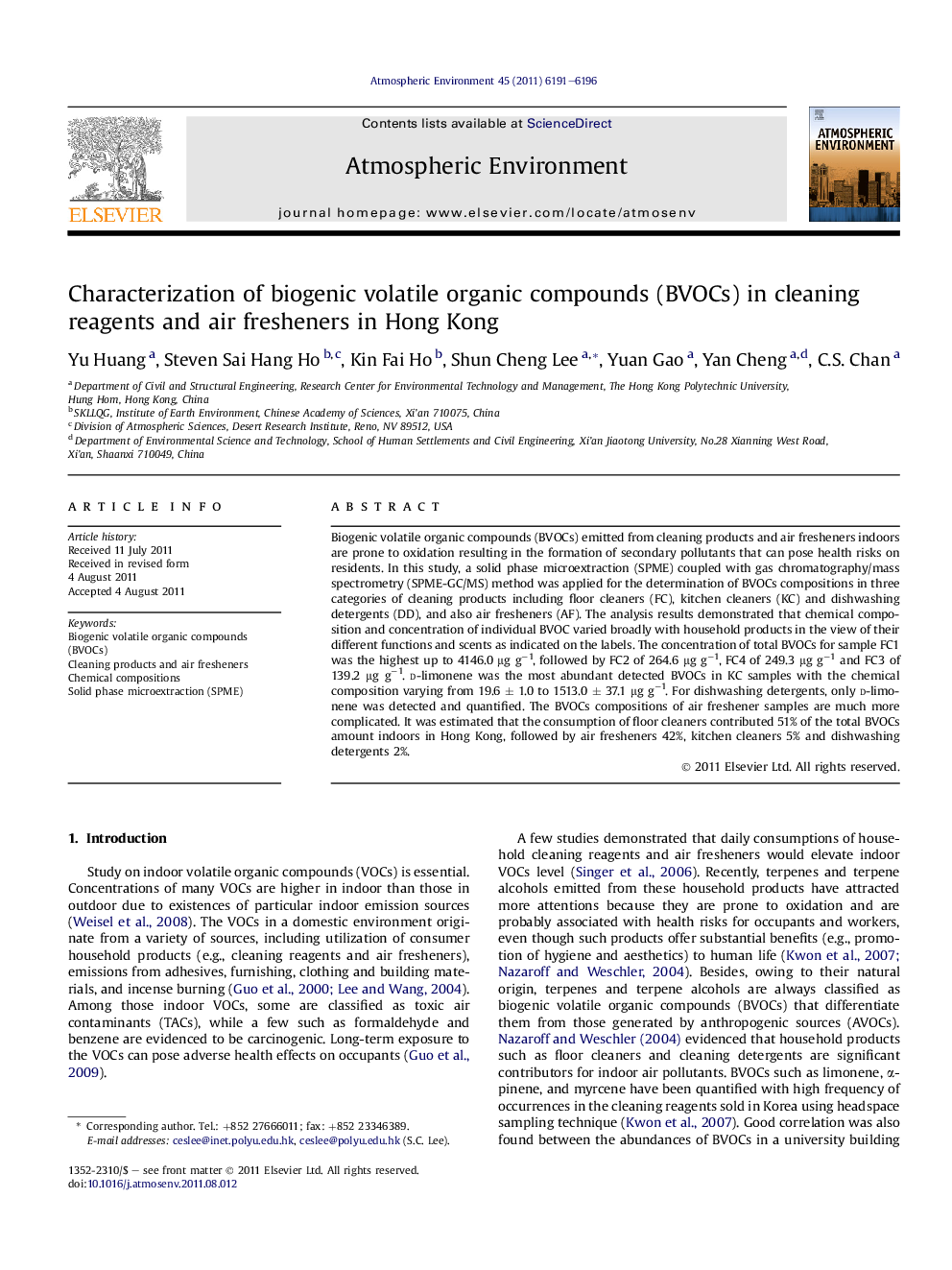| کد مقاله | کد نشریه | سال انتشار | مقاله انگلیسی | نسخه تمام متن |
|---|---|---|---|---|
| 4439362 | 1311016 | 2011 | 6 صفحه PDF | دانلود رایگان |

Biogenic volatile organic compounds (BVOCs) emitted from cleaning products and air fresheners indoors are prone to oxidation resulting in the formation of secondary pollutants that can pose health risks on residents. In this study, a solid phase microextraction (SPME) coupled with gas chromatography/mass spectrometry (SPME-GC/MS) method was applied for the determination of BVOCs compositions in three categories of cleaning products including floor cleaners (FC), kitchen cleaners (KC) and dishwashing detergents (DD), and also air fresheners (AF). The analysis results demonstrated that chemical composition and concentration of individual BVOC varied broadly with household products in the view of their different functions and scents as indicated on the labels. The concentration of total BVOCs for sample FC1 was the highest up to 4146.0 μg g−1, followed by FC2 of 264.6 μg g−1, FC4 of 249.3 μg g−1 and FC3 of 139.2 μg g−1. d-limonene was the most abundant detected BVOCs in KC samples with the chemical composition varying from 19.6 ± 1.0 to 1513.0 ± 37.1 μg g−1. For dishwashing detergents, only d-limonene was detected and quantified. The BVOCs compositions of air freshener samples are much more complicated. It was estimated that the consumption of floor cleaners contributed 51% of the total BVOCs amount indoors in Hong Kong, followed by air fresheners 42%, kitchen cleaners 5% and dishwashing detergents 2%.
► BVOCs compositions in cleaning products and air fresheners were determined by SPME-GC/MS method.
► Concentration of individual BVOC varied broadly with different household products.
► The use of floor cleaners was estimated to contribute most to total indoor BVOCs.
► Secondary products formation potential varied in the order AF > FC > KC > DD in the presence of ozone.
Journal: Atmospheric Environment - Volume 45, Issue 34, November 2011, Pages 6191–6196